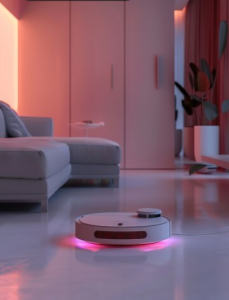
As technology advances rapidly, it is changing the way we live, work, and interact with our surroundings. One exciting development is the idea of smart spaces, where technology is seamlessly integrated into interior design to improve functionality, efficiency, and aesthetics. This article explores how incorporating technology into our living and working environments is reshaping modern interior design.
In Houston interior design, smart technologies are expanding what is possible. From homes that anticipate our needs to workplaces that adapt in real-time, the integration of technology into everyday spaces creates environments that are both intelligent and intuitive. This discussion will cover how home automation redefines comfort, the adaptability of modular furniture, the impact of smart lighting on aesthetics, sustainable living through energy-efficient technology, and the immersive experiences brought by advanced entertainment systems.
Integrating Smart Devices for Home Automation
Smart homes are becoming more popular as technology advances, bringing devices like thermostats, lighting systems, and security cameras into our homes. These gadgets make life easier, letting homeowners manage their surroundings with a touch or voice command.
Home automation goes beyond simple control; it boosts comfort by allowing precise adjustments to temperature and lighting based on personal preferences. Additionally, smart security systems enhance safety, enabling remote monitoring and immediate alerts to potential problems. This seamless blend of technology into our homes is changing how we live, making our spaces more responsive and adaptive.
Creating Multi-Functional Spaces with Modular Furniture
Modular furniture with advanced technology features is key for designing versatile spaces for modern living. These pieces, equipped with built-in charging stations and wireless connectivity, blend style and function. For example, a modular sofa can easily switch from a comfy seating area to a workspace, thanks to its tech features and flexible design. This is essential in places where space is tight but demands are high, like city apartments and shared living spaces.
By serving multiple purposes, this furniture helps homeowners use their space more efficiently. It also supports a dynamic lifestyle, allowing areas to be quickly adapted for different activities, from work to relaxation. In short, modular furniture with tech integrations not only saves space but also boosts the flexibility and usefulness of modern homes.
Improving Aesthetic Appeal through Smart Lighting
Smart lighting systems have changed how homeowners can quickly adjust the atmosphere in their homes. These systems are both functional and attractive, offering features like adjustable color temperatures and automated schedules. Users can change the lighting to fit different times of the day or specific activities, improving the look and functionality of their spaces.
For example, you can switch a bright workspace to a cozy, warm-toned relaxation area with just a few taps on a smartphone. Additionally, smart lighting can connect with other smart home devices, creating a seamless and automated environment. This not only enhances the user experience but also adds a practical and beautiful element to interior design.
Sustainable Living with Energy-Efficient Technologies
Focusing on sustainable living, energy-efficient technologies are now key in interior design. Smart thermostats allow precise temperature control, enhancing comfort and saving energy. Solar-powered devices reduce dependence on traditional energy sources, lowering electricity bills and shrinking the carbon footprint. These innovations not only help the environment but also cut utility costs.
Designers are increasingly including these technologies in their plans, making homes stylish and eco-friendly. This trend aligns with the global move towards sustainability, encouraging a greener lifestyle without sacrificing modern conveniences. The balance between technology and sustainability creates living spaces that are both advanced and responsible.
Immersive Entertainment Systems for Modern Living
Homes are changing with the addition of modern entertainment systems, enhancing how we enjoy media and relax. Smart TVs, with their ultra-high-definition screens and internet access, offer endless streaming options. Surround sound systems provide cinema-like audio, making the viewing experience more immersive.
Virtual reality setups are also becoming popular, allowing users to explore virtual worlds from their living rooms. These technologies not only add convenience but also become central features of modern living spaces, offering new ways to engage with entertainment. By incorporating these advanced systems into homes, we are redefining leisure and setting a new standard for media consumption.
The integration of smart technology into interior design is revolutionizing our living and working environments. From home automation systems that enhance comfort and security to modular furniture that maximizes space efficiency, these innovations are making our spaces more adaptive and responsive. Smart lighting improves both functionality and aesthetic appeal, while energy-efficient technologies support sustainable living. Advanced entertainment systems provide immersive experiences, transforming how we enjoy leisure time. Together, these elements create intelligent and intuitive spaces that reflect the future of modern interior design, seamlessly blending technology with everyday life to improve our overall quality of living.

